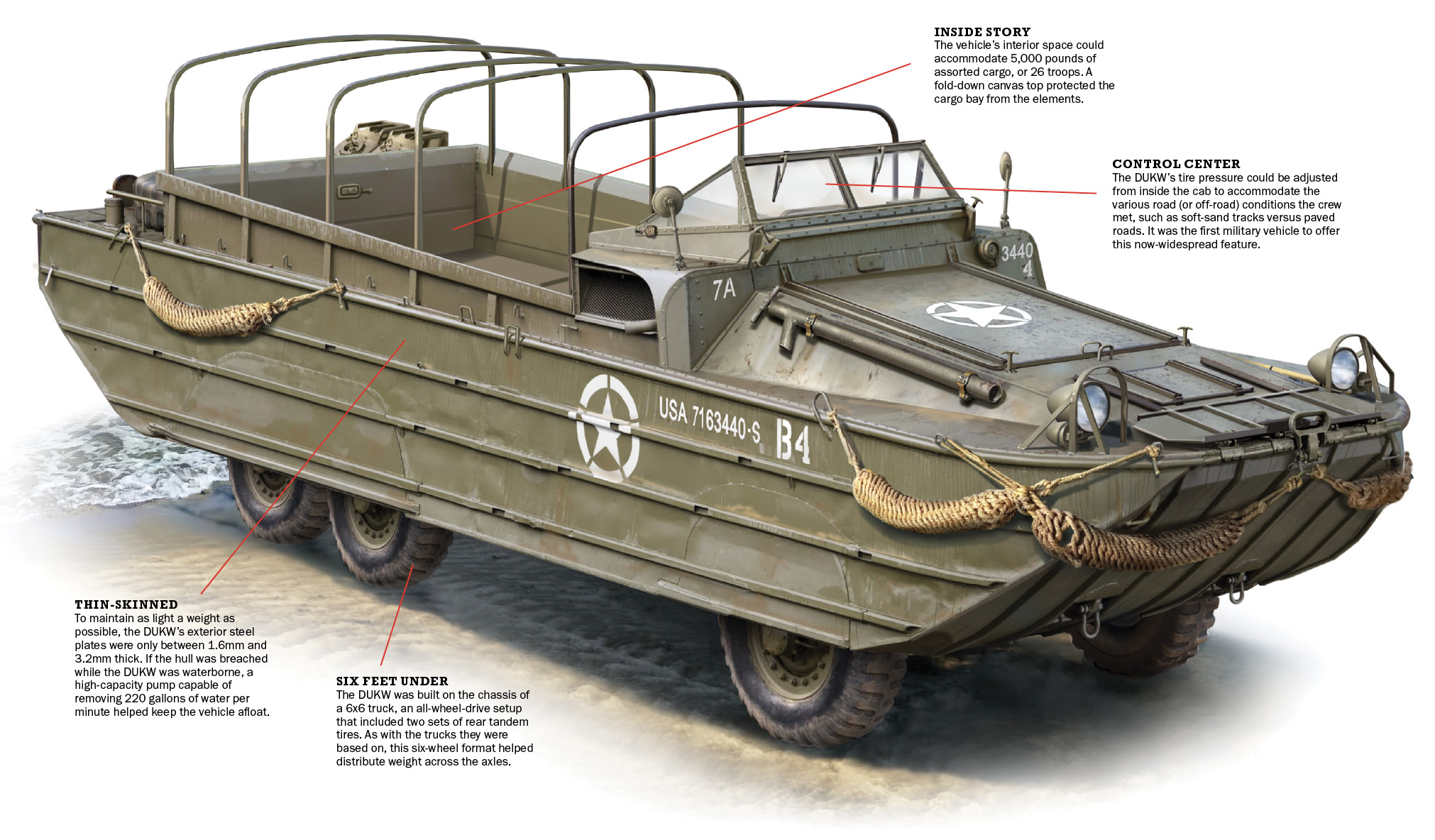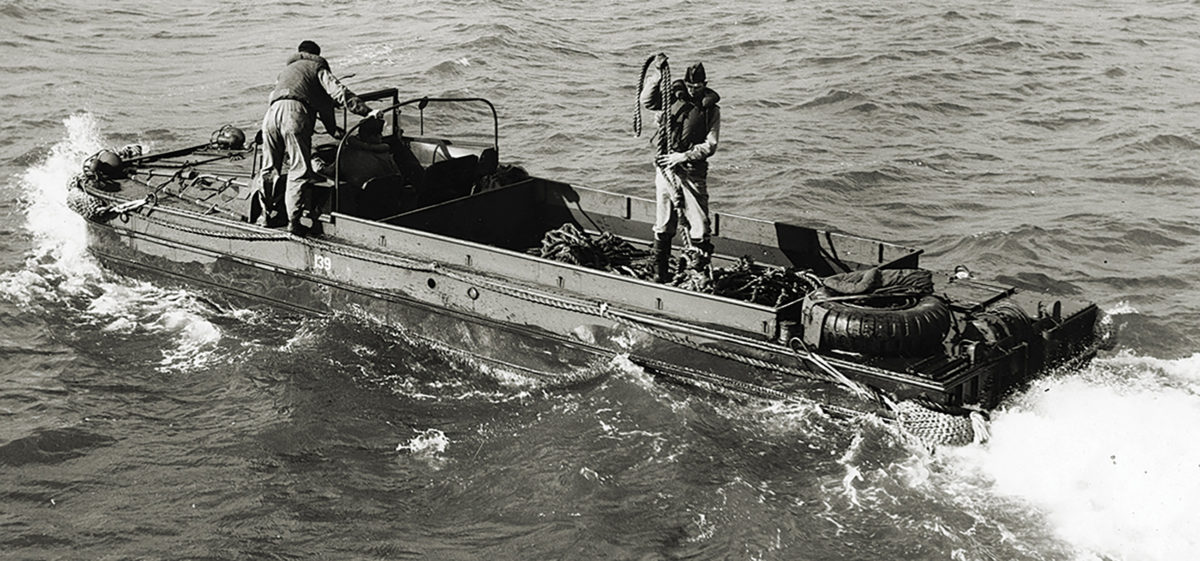Built by the General Motors Corporation from 1942 to 1945, the DUKW was a six-wheel amphibious truck on a 2.5-ton chassis whose letters stood for (in GMC lingo) the year it was introduced (“D”-1942); its purpose (“U”-Utility); “K” for “all-wheel drive”; and “W” for its dual rear axles. The U.S. military initially rejected the proposed vehicle, but at about that time a U.S. Coast Guard vessel ran aground near Provincetown, Massachusetts, and an early model DUKW that happened to be there was the only available means of saving the seven crewmen. Once in production, the military utilized the versatile vehicle to ferry troops and supplies over both water and land. First appearing at Guadalcanal in late 1942, the DUKW made its European Theater debut on Sicily in July 1943 and went on to support Allied amphibious landings on all fronts, including on D-Day and at numerous river crossings.
Ultimately 21,147 “Ducks” were built; Britain received 2,000 through Lend-Lease, as did Australia with 535 and the Soviet Union with 586. Much used in Korea and other conflicts following World War II, DUKWs are now maintained mostly for tourism and other civilian uses.







